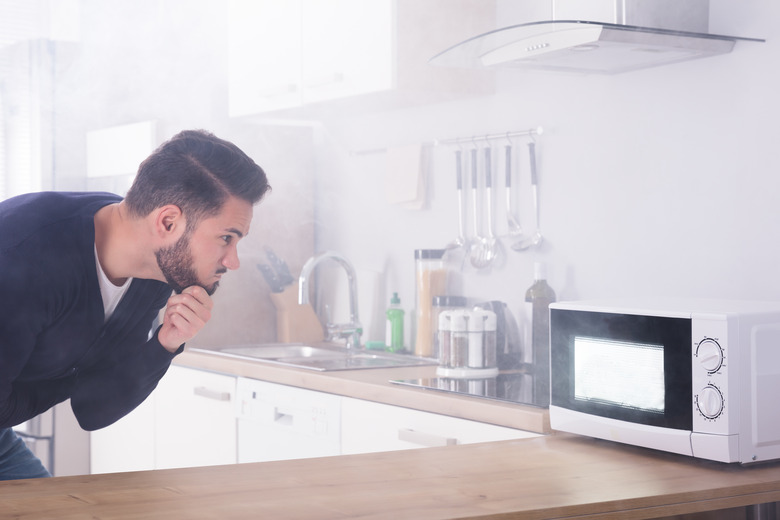What Is The Correct Surge Protector For A Microwave?
Household appliances such as microwaves sometimes fall victim to power surges. These brief but powerful spikes can cause irreparable damage to your home equipment. Like other appliances, your microwave is vulnerable to damage during these surges. Even if your beloved kitchen helper survives one power spike, repeated small attacks can slowly destroy its electrical circuits over time. Using the correct surge protector helps extend the lifetime of your microwave and minimize the impact of an unexpected fluctuation in electrical power. For adequate protection, verify that your microwave's surge protector has a UL rating of 1449.
Surge Protector Function
Surge Protector Function
Thunderstorms, lightning strikes and sudden power outages can all cause power surges. When a device in your home suddenly shuts off, the voltage it was consuming doesn't just disappear. Instead, it moves to another device or location where it can cause damage. Your microwave could be the recipient of this boost. To prevent this issue, surge protectors and suppressors protect electronic devices and appliances at their outlets when the voltage exceeds the peak level of 169 volts. When the voltage is too high, a device inside the unit activates and promptly redirects the excess voltage to ground where it can do no harm.
Types of Protectors
Types of Protectors
There are two primary types of surge protector. One is the service entrance surge protector. Serving as the first line of defense, this type of protector covers your entire house by stopping surges at your meter or electrical panel where electricity first enters your home. These bad boys can handle surges of up to 20,000 volts and offer serious protection. Service entrance surge protectors are best installed by a qualified electrician, however, since they get installed in potentially high voltage areas you really shouldn't play with.
The second type of surge protector is the one you're more likely to be familiar with. Known as point-of-use protectors, these surge protectors plug into your electrical outlets. You then plug appliances like your microwave directly into the surge protector. These surge protectors are often combined with outlet strips to provide both surge protection and more places to plug in your electrical devices. Although they are all rated differently, point-of-use protectors generally provide protection for surges as high as 6,000 volts. Higher end units often feature lights or alarms that alert you when they need replacing.
Getting the Right Protection
Getting the Right Protection
Surge protectors aren't all equal, and there's no point wasting money on one that can't do the job. To protect your microwave, look for a surge protector that bears the Underwriter Laboratories (UL) 1449 safety standard designation. This guarantees that the surge protector can handle a 6,000 voltage surge and reduce it to safer levels. The surge protector should also have an internal fuse that breaks the circuit. If the power surge proves too much for the suppressor, this fuse will blow, breaking the circuit before the power reaches the microwave or other appliance.
For additional protection, choose manufacturers that provide a warranty for suppressors that malfunction. As long as you have proof that the surge protector malfunctioned, the warranty should cover the cost of replacing or repairing your microwave.
Expert Insight
Expert Insight
Remember that surge protectors function as an insurance policy. You wouldn't pay for full coverage on an old beat up car, and this same philosophy applies to surge suppressors. Buying a $30 or $40 surge protector to protect your $1,000 computer system makes sense, but the same may not hold true for a cheap microwave. Because surge protectors range from as low as $20 to as high as $150, replacing a microwave may be more practical than purchasing a high-end surge protector. If you decide to purchase a microwave surge protector, check to ensure that its outlet links to the grounding system. This will ensure that surge protector can divert the excess voltage to the ground, rather than to other appliances.
